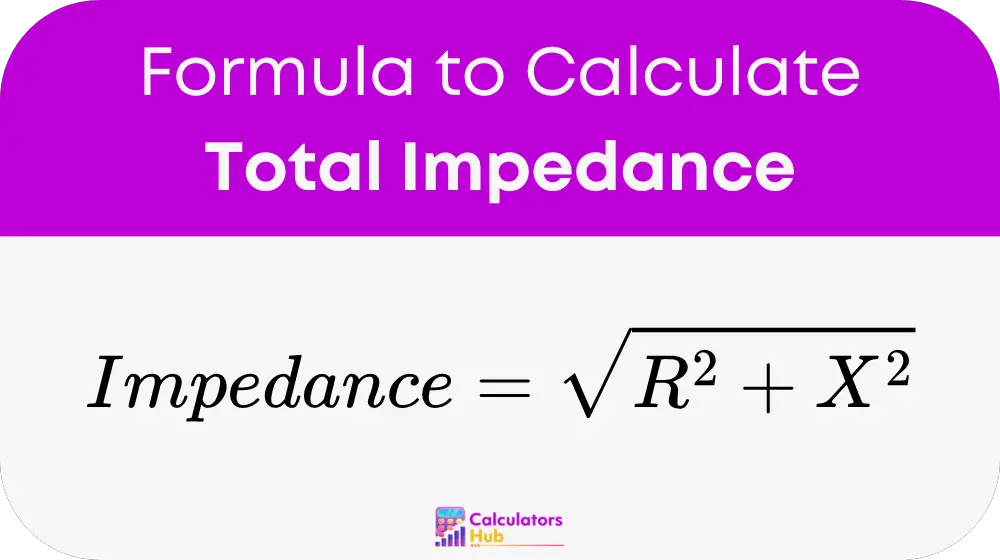A total impedance calculator is an essential tool that helps electrical engineers, technicians, and students calculate the impedance of a circuit quickly and accurately. This tool simplifies complex calculations and allows for efficient analysis and decision-making in circuit design and maintenance.
Formula of Total Impedance Calculator
The formula to calculate total impedance

where:
- R represents the resistance in ohms, indicating the opposition to a steady electric current.
- X represents the reactance in ohms, which quantifies the opposition to a changing electric current due to capacitance or inductance.
Helpful Conversion Table
To aid quick calculations and references, here’s a table of typical impedance values for common components:
| Component | Resistance (Ω) | Reactance (Ω) | Total Impedance (Ω) |
|---|---|---|---|
| Resistor 10Ω | 10 | 0 | 10 |
| Inductor 5mH | 0 | 5 | 5 |
| Capacitor 100μF | 0 | -100 | 100 |
This table can be use to quickly reference or approximate impedance values without detailed calculations.
Example of Total Impedance Calculator
Let’s consider a practical scenario where we calculate the total impedance for a series circuit consisting of a 10 ohm resistor and a 5 mH inductor, operated at a frequency of 50 Hz. Here’s how we would calculate it:
Step 1: Identify the components and their values
- Resistance (R) = 10 ohms
- Inductance (L) = 5 mH = 0.005 H (henries)
Step 2: Calculate the angular frequency The angular frequency (omega, ω) is calculate using the formula: omega = 2 x pi x f where f is the frequency.
For a frequency of 50 Hz: omega = 2 x pi x 50 = 314.16 rad/s
Step 3: Calculate the inductive reactance Inductive reactance (X_L) is given by: X_L = omega x L X_L = 314.16 x 0.005 = 1.57 ohms
Step 4: Apply the total impedance formula Now, using the formula for total impedance: Z_total = square root of (R squared + X squared) where X represents the total reactance. Since we only have inductive reactance in this scenario:
Z_total = square root of (10 squared + 1.57 squared)
Z_total = square root of (100 + 2.47) = square root of (102.47) = 10.12 ohms
Most Common FAQs
Impedance is the total opposition a circuit offers to the flow of alternating current. It is vital for designing circuits that efficiently manage power and signal integrity.
For complex circuits, total impedance can be calculated by separately summing up the resistive and reactive components and then using the impedance formula.
Yes, this calculator is suitable for high-frequency applications as it considers both resistive and reactive components, crucial for accurate high-frequency circuit design.